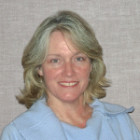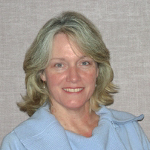 Supporting youth voices was not as popular in the 1990s as it is today. Systems were afraid of what young adults had to say. The general public and many professionals felt teenagers and emerging adults, were “difficult” to work with, had “attitudes”, and that it was “too late to make a difference” in their lives. Small pockets of advocates around the country started to change that perspective and North Carolina joined the movement. I was fortunate to help develop a youth driven group called SaySo: Strong Able Youth Speaking Out. That was 16 years ago. Like others, I was ambivalent: Would young adults speaking out publicly make any difference? Would young adults be too embarrassed to honestly share their story? I knew that hearing their stories, ideas, and challenges made a difference to me personally and professionally but would they motivate others to change their perspectives and practice? These questions are not unlike those others had as well.
Supporting youth voices was not as popular in the 1990s as it is today. Systems were afraid of what young adults had to say. The general public and many professionals felt teenagers and emerging adults, were “difficult” to work with, had “attitudes”, and that it was “too late to make a difference” in their lives. Small pockets of advocates around the country started to change that perspective and North Carolina joined the movement. I was fortunate to help develop a youth driven group called SaySo: Strong Able Youth Speaking Out. That was 16 years ago. Like others, I was ambivalent: Would young adults speaking out publicly make any difference? Would young adults be too embarrassed to honestly share their story? I knew that hearing their stories, ideas, and challenges made a difference to me personally and professionally but would they motivate others to change their perspectives and practice? These questions are not unlike those others had as well.
Organizing a youth driven council involves (above all) time and commitment but it also includes plenty of drama, challenges and “push-backs” from adults trying to control the process. The outcomes, however, can exceed your wildest dreams! Youths can influence state and local policies for the population they represent, they can change their own trajectory and the general public’s opinion about their potential.
Keep Youth Investment Fresh
Youth organizations need to be built on the principles of Positive Youth Development. Young people are viewed as resources to themselves, their peers and the community. Youths are exposed to policy creation, public speaking, being an important piece of a bigger agenda and providing other youths with information and support typically provided by youth serving agencies. Youth leaders enter into contracts with the organization to help identify relevant issues and become a part of the solution. Contracts provide accountability between youths. They come to “own” the program and are much harder on one another and have higher expectations than the adults have. Adults are used for guidance, support and targeted assistance but not to provide the answers.
It is essential to build programming to reflect youths’ talents and interest. Consider conducting regular brainstorming sessions focused on activities, ideas and events that interest youths. Foster youth decision making that directly impacts “their” program. Brainstorming ideas can be combined with youths’ talents to refresh and reenergize programming generated by youths’ global investment. The research demonstrates that programs established on positive youth development principles and that create opportunities for productive decision-making mitigate or eliminate risk, increase protective factors and actively enhance overall well-being. The Center for the Study of Social Policy suggests that the probability of positive, adaptive and healthy outcomes, even in the face of risk and adversity, are possible under such conditions.
Originally, SaySo was not established to build protective factors and mitigate the traumas youths have experienced. It was built on the principles of sustainability and “each one teach one.” However, somewhere along the line, we recognized we are enhancing protective factors and impacting youths’ outcomes. It seems working with teenagers and young adults is worth the effort — to the entire community!
Lessons learned
-
Learn from other similar organizations. This cannot be overstated. Organizations are usually very willing to share. Just ask. No matter how long an organization has been around, they have learned something that would be helpful to you.
-
Working to help connect youths to youth advocacy opportunities is labor intensive. This is hard, emotional work and staff can be pulled into sometimes unimaginable life situations.
-
Remain flexible within a predictable structure. Youth leaders will need latitude to create goals and plans that match the current needs and utilize the available youth talent base.
-
Consistency of relationships. One of the most difficult aspects of an organization is to retain the workforce that provides consistent relationships with leaders, members and partners. Keep in mind, it can take three to five years to build a predictable program. Changes as described in #4 will reset the clock on this building process.
-
Adults providing support and guidance need to have the support of other adults to remain youth driven. It is very easy for adults to slide into the role of telling youths what to do.
-
Do not be afraid to try something different. This will make youths want to get and stay involved. By creating varying opportunities not normally experienced in their daily lives, youths will be drawn to the organization and may tap into yet undiscovered qualities, talents or interests. Those interests build and expand the organization’s programming while becoming a reflection of the youth membership. Exposing youths to a variety of experiences can also expand the young person’s own sense of self, future goals and decision making skills.
Nancy Carter, ACSW, is executive director of Independent Living Resources, Inc. (SaySo’s parent company) in Durham, N.C. nancy.carter@ilrinc.com
































